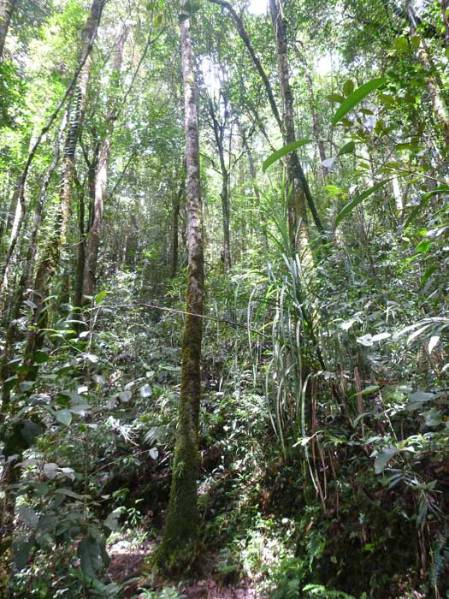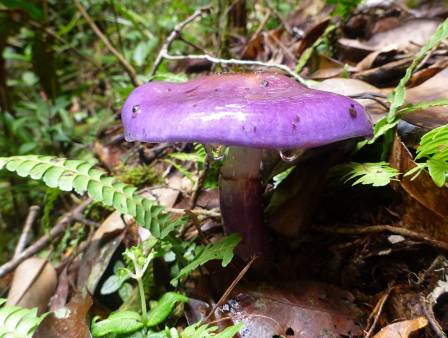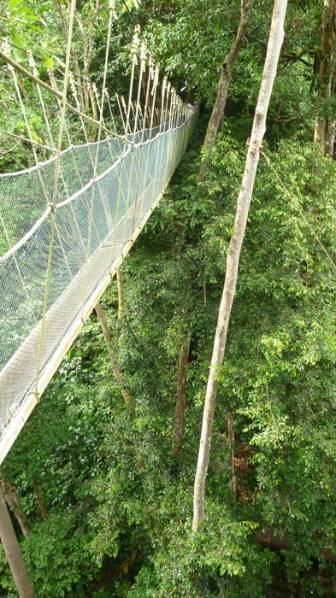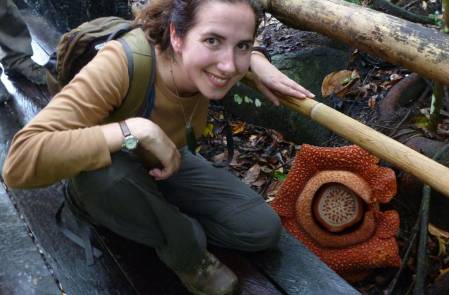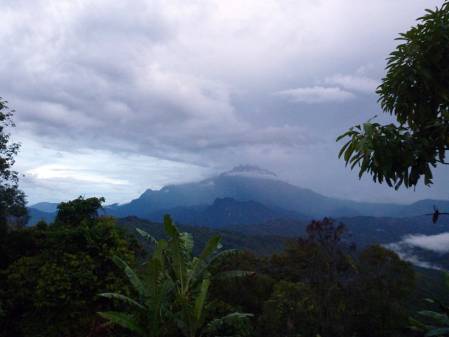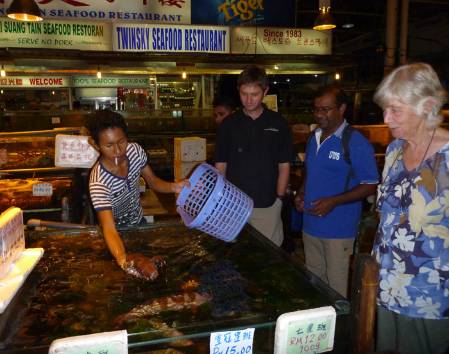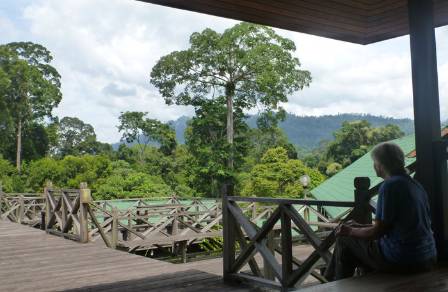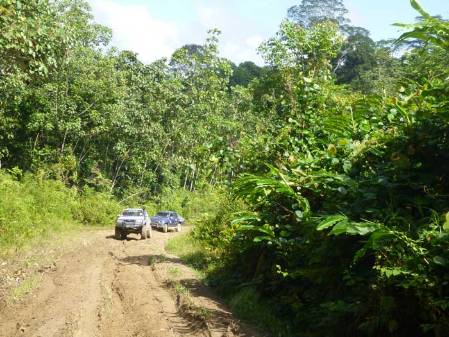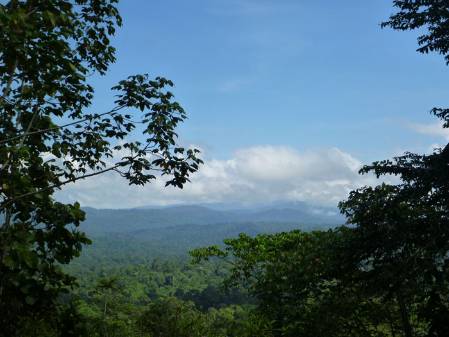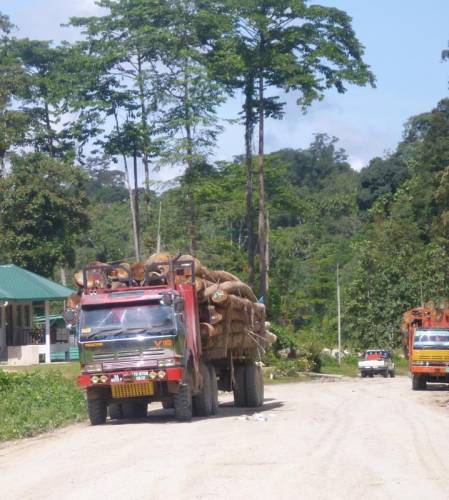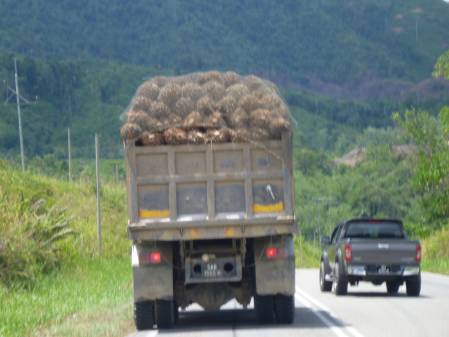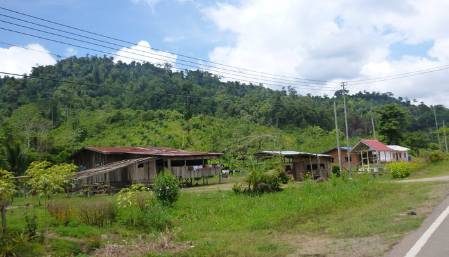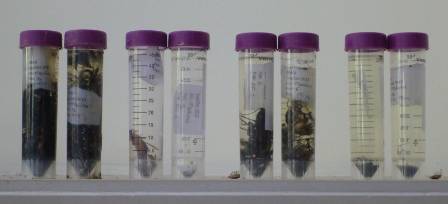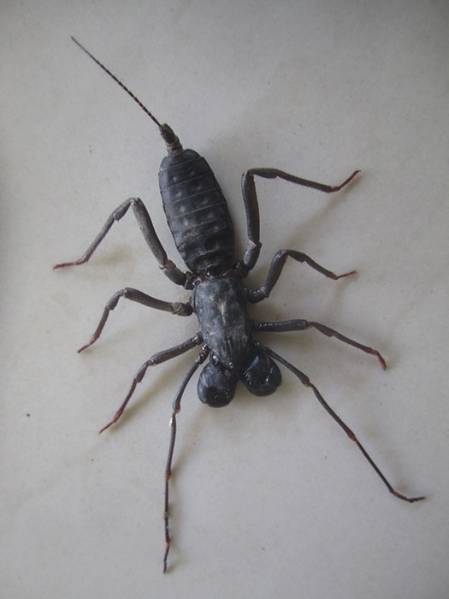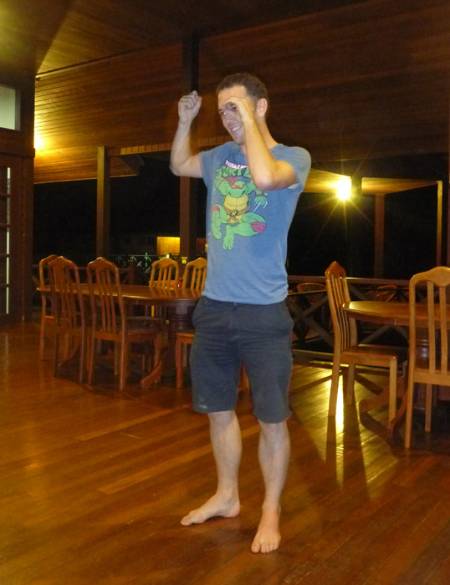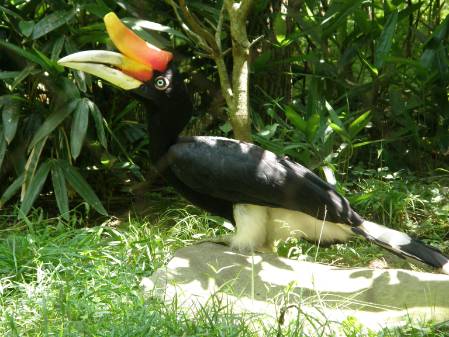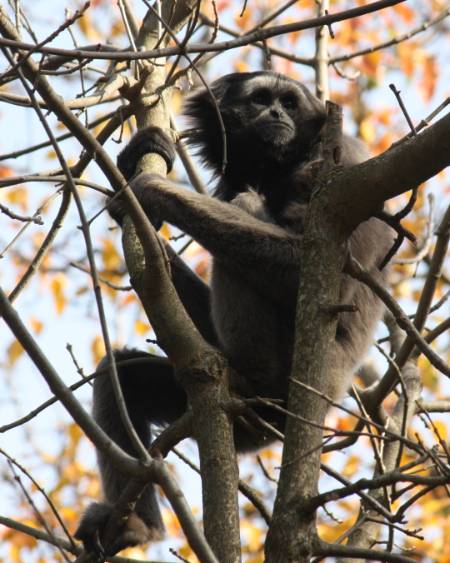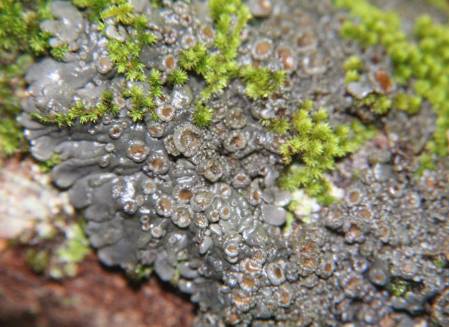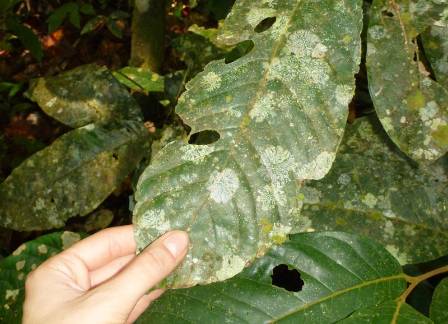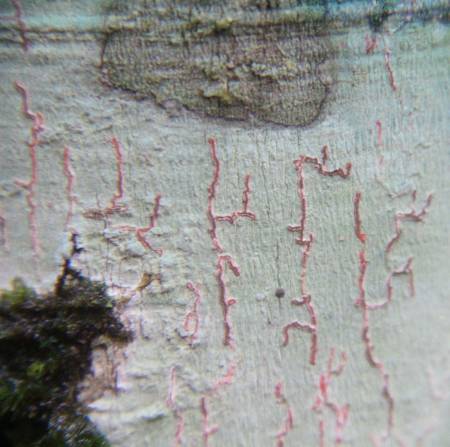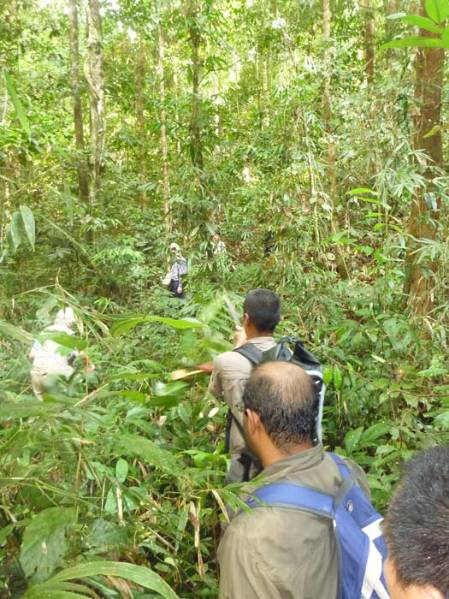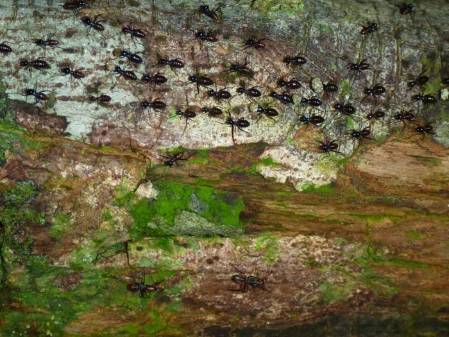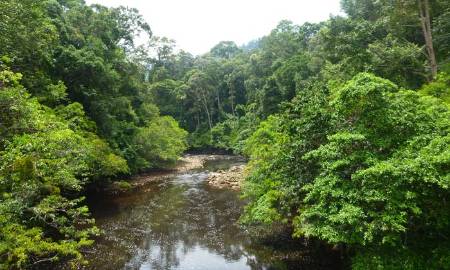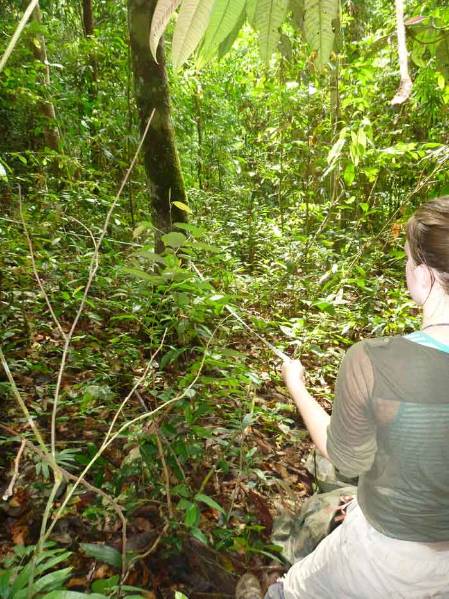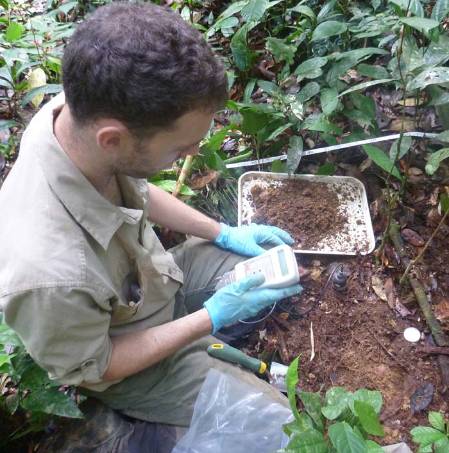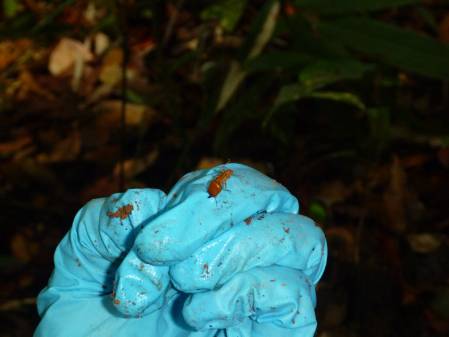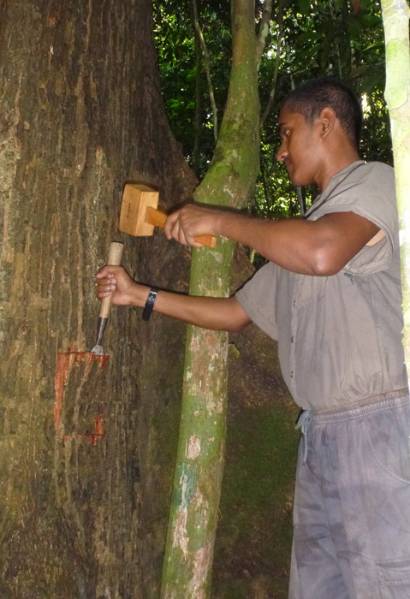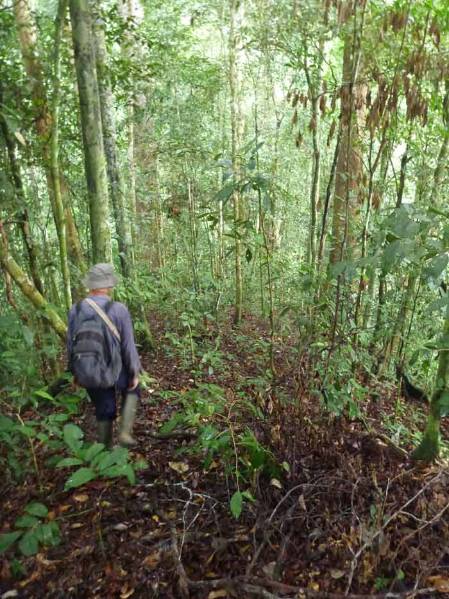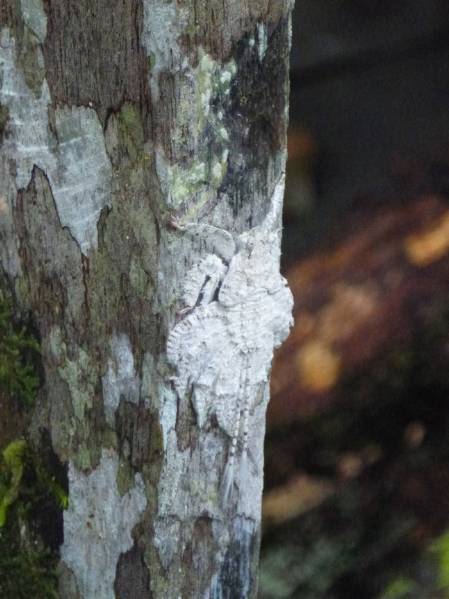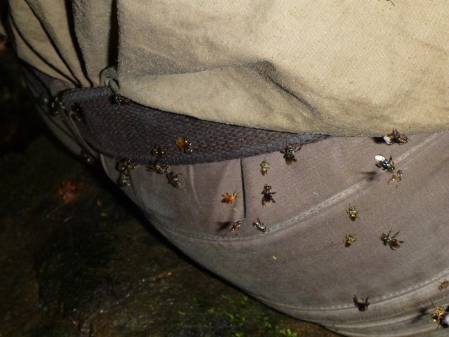From the city of Kota Kinabalu, on a clear day, you can see a mighty mountain rising up on the horizon. This is Mount Kinabalu – the tallest peak in South East Asia at 4095m above sea level.
Up in the clouds in can be difficult to see anything!
Unfortunately, for most of today the mountain was hidden from view due to low lying cloud, and it was into this cloud that we all drove in search of more lichens (for Holger, Pat and Charles) and a chance to experience Gunung Kinabalu National Park.
The conditions in Gunung Kinabalu National Park are far less hot and humid than we have been used to in Maliau.
A World Heritage Site, the park stretches for 754km2 (an area larger than Singapore) and surrounds Mount Kinabalu. In a far cooler climate (due to the altitude) than Maliau Basin, the forest feels distinctly different. There are lots of ferns and mosses and cream coloured orchids.
A wonderful purple toadstool that we spotted in the forest.
Because the park is so massive, we only had time to see a small part of it. We briefly visited an area that has natural hot springs and a tree-top walk that attracts a lot of visitors. Just like in Maliau, it was wonderful to view the forest from a different perspective, although a little nerve-racking…I’m sure it was higher up than before and the walkway was certainly a lot narrower!
Wonderful views but not for those who suffer from vertigo!
With the cloud still hanging low and the rain coming and going, we chanced upon something very special, the opportunity to see a Rafflesia in bloom. There are 17 different species of Rafflesia plant, all of them endemic to Borneo. They are also known as the ‘corpse flower’, because of the smell of rotting flesh that they give off when in bloom.
A fly briefly settles inside the flower of the Rafflesia.
The flower blooms for several days, letting off a pungent smell that attracts carrion flies (that pollinate it). After this short period, the petals become blemished and the flesh darkens and rots. Our flower wasn’t smelling very strongly when we saw it…perhaps a good thing, it doesn’t sound very pleasant!
Up close and personal, fortunately this flower didn’t smell too badly during our visit!
Content and happy at our chance viewing of such a famous flower, we made our way back towards the city. Pausing on the way to sample some barbequed Bearded Pig (particularly tasty!) the clouds finally parted to reveal a picturesque view of Mount Kinabalu in the late afternoon light.
Mount Kinabalu
Having spent the day with Charles (one of our main collaborators from Universiti Malaysia Sabah), he introduced us to one of the best places in Kota Kinabalu to go for dinner.
A huge area full of table and chairs and lots of fish!
In a massive almost warehouse sized area, we found ourselves surrounded by several different fish restaurants. Here, tank upon tank housed live fish and shellfish of almost every variety imaginable. Charles picked out the scallops, prawns, soft-shelled crabs and grouper (a type of fish) we were to have for dinner. You don’t get much fresher than that! Delicious.
Charles picks out the fish we are to have for dinner while Dan and Pat look on eagerly.




